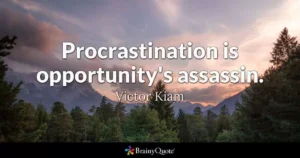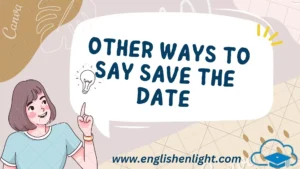Introduction
“Choose formal salutations wisely. This article offers diverse options for respectful and inclusive email greetings.”
In email communication, the salutation sets the tone for the message and establishes a professional rapport. While “Hello All” is commonly used to address a group, there are various formal alternatives that can add a touch of professionalism and warmth to your emails.
This article explores 25 formal ways to greet a group in email correspondence, offering diverse options to suit different contexts and relationships.
List Of Formal Ways to Say “Hello All” in an Email
- Greetings Everyone,
- Good day to all,
- Esteemed Colleagues,
- Dear Team Members,
- Respected Members,
- To Whom It May Concern,
- Esteemed Recipients,
- Honorable Guests,
- Distinguished Colleagues,
- Dear Sir/Madam,
- Esteemed Partners,
- Dear All,
- Ladies and Gentlemen,
- Dear [Company/Organization] Members,
- To Our Valued Stakeholders.
- Dear Contributors,
- Esteemed Collaborators,
- Respected Partners,
- Dear Colleagues,
- Honorable Members,
- Esteemed Invited Guests,
- Dear Board Members,
- Respected Authorities,
- Esteemed Clients,
- Dear Benefactors,
Overview
“In the realm of email communication, the choice of salutation carries significant weight in setting the tone and fostering professional rapport. While ‘Hello All’ serves as a common address for group emails, exploring formal alternatives can elevate the professionalism and warmth of the message.
This article presents a comprehensive list of 25 formal greetings suitable for various contexts and relationships, ranging from ‘Greetings Everyone’ to ‘To Our Valued Stakeholders.’ Each option offers unique advantages, such as establishing respect, creating inclusivity, and setting a professional tone.
However, it’s crucial to weigh these benefits against potential drawbacks, including a lack of personalization and cultural considerations. By carefully selecting an appropriate greeting and considering its pros and cons, email senders can effectively convey professionalism and courtesy, enhancing the overall quality of their communication.”
Is it considered formal to Say “Hello All” in an Email?
Yes, using “Hello All” in an email can be considered formal in certain contexts, especially when addressing a group of colleagues, clients, or professionals in a business setting. However, its formality level may vary depending on factors such as the organizational culture, the nature of the relationship with the recipients, and the overall tone of the email. In more formal situations, alternatives like “Dear Team,” “Greetings Everyone,” or “Good Morning/Afternoon All” might be preferred.
Formal Ways to Say “Hello All” in an Email
1. Greetings Everyone:
In the realm of formal email salutations, “Greetings Everyone” stands out as a welcoming and inclusive way to commence your correspondence. It conveys warmth while maintaining professionalism. Consider using this phrase when addressing a diverse group or when you seek a congenial tone in your communication.
Scenario Example:
Subject: Monthly Progress Report Meeting Invitation
Dear Team,
Greetings Everyone,
I hope this email finds you well. As we approach the end of the month, it’s time for our regular progress report meeting. We’ll convene in the conference room on Friday, April 26th, at 10:00 AM. Your participation and insights are crucial as we review our achievements and set targets for the upcoming month.
Looking forward to fruitful discussions.
Best regards,
Adam Evans
2. Good day to all:
“Good day to all” is a courteous and upbeat way to address multiple recipients in a formal email setting. It sets a positive tone for the communication and acknowledges the collective audience with a touch of warmth.
Scenario Example:
Subject: Invitation to Quarterly Review Session
Dear Team Members,
Good day to all,
I trust this email finds each of you in good spirits. As we approach the end of the quarter, it’s time to reflect on our achievements and strategize for the future. Your attendance at the upcoming review session is essential to ensure alignment and progress. Please mark your calendars for Thursday, April 25th, at 2:00 PM in the main conference room.
Wishing you all a productive week ahead.
Warm regards,
Adam Evans
3. Esteemed Colleagues:
Addressing recipients as “Esteemed Colleagues” imparts a sense of respect and appreciation for their professional standing. This salutation acknowledges their expertise and contributions, fostering a sense of camaraderie within the professional sphere.
Scenario Example:
Subject: Proposal Review Meeting Invitation
Dear Team,
Esteemed Colleagues,
I hope this email finds you well. As we prepare to review the latest proposal for our upcoming project, I am reminded of the expertise and dedication each of you brings to our team. Your insights and feedback are invaluable in shaping the direction of our endeavors.
Kindly join us for a meeting on Tuesday, April 23rd, at 3:00 PM to discuss the proposal in detail.
Warm regards,
Adam Evans
4. Dear Team Members:

“Dear Team Members” is a straightforward and inclusive salutation commonly used in professional environments. It explicitly addresses the collective group while fostering a sense of unity and belonging among team members.
Scenario Example:
Subject: Reminder: Training Workshop Tomorrow
Dear Team Members,
Just a friendly reminder that our training workshop on [topic] is scheduled for tomorrow, April 24th, from 9:00 AM to 12:00 PM in the training room. Your attendance is crucial as we delve into important aspects of [topic] to enhance our skills and knowledge.
Looking forward to productive discussions and learning sessions.
Best regards,
Adam Evans
5. Respected Members:
“Respected Members” is a courteous and formal way to address recipients, acknowledging their standing and contributions within the context of the communication. This salutation conveys esteem and recognition for their expertise or position.
Scenario Example:
Subject: Invitation to Quarterly Review Session
Dear Respected Members,
As we approach the end of the quarter, it’s time to gather insights and reflections on our progress. Your valuable input and perspectives are instrumental in shaping our strategies moving forward. Please join us for a review session on Wednesday, April 24th, at 10:00 AM in the boardroom.
Looking forward to fruitful discussions.
Warm regards,
Adam Evans
6. To Whom It May Concern:
“To Whom It May Concern” is a formal salutation used when the sender is unsure of the recipient’s identity. While it lacks the personal touch of addressing someone by name, it is suitable for initiating communication with unknown parties in a professional context.
Scenario Example:
Subject: Inquiry Regarding Procurement Procedures
To Whom It May Concern,
I hope this email finds you well. I am writing to inquire about the procurement procedures outlined in your organization’s policies. As we explore potential collaboration opportunities, understanding your procurement processes is crucial to ensure alignment and compliance with regulatory requirements.
I appreciate any information or guidance you can provide on this matter.
Best regards,
Adam Evans
Certainly! Let’s continue exploring more formal ways to say “Hello All” in an email.
7. Esteemed Recipients:
Addressing recipients as “Esteemed Recipients” reflects a high level of regard and respect for the individuals receiving the communication. This salutation acknowledges their importance and signifies that their attention and participation are valued.
Scenario Example:
Subject: Invitation to Annual Conference
Esteemed Recipients,
It is with great pleasure that we extend an invitation to you for our annual conference on [topic/theme]. This event promises to be an enriching experience, featuring keynote speakers, panel discussions, and networking opportunities.
We look forward to your presence and participation in shaping meaningful conversations and collaborations.
Warm regards,
Adam Evans
8. Honorable Guests:
“Honorable Guests” is a dignified salutation reserved for recipients who hold esteemed positions or are being acknowledged for their special status within the context of the communication. It conveys respect and appreciation for their presence or involvement.
Scenario Example:
Subject: Invitation to Awards Ceremony
Honorable Guests,
We are delighted to extend a formal invitation to you for our annual awards ceremony recognizing excellence and innovation in [industry/sector]. Your esteemed presence at this event would be an honor as we celebrate the achievements of our community.
Please save the date: Friday, April 26th, at 6:00 PM in the Grand Ballroom.
Warm regards,
Adam Evans
9. Distinguished Colleagues:
Addressing recipients as “Distinguished Colleagues” acknowledges their notable achievements or contributions within their respective fields. This salutation conveys admiration and respect for their professional standing and expertise.
Scenario Example:
Subject: Invitation to Leadership Summit
Distinguished Colleagues,
It is with great pleasure that we invite you to participate in our upcoming leadership summit focused on [theme/topic]. This gathering of thought leaders and industry experts promises to foster insightful discussions and collaborations aimed at driving positive change and innovation.
We look forward to your distinguished presence at this event.
Warm regards,
Adam Evans
10. Dear Sir/Madam:
“Dear Sir/Madam” is a formal salutation used when the sender is addressing someone whose gender is unknown or when adhering to traditional formalities. While it lacks personalization, it maintains a respectful tone in professional communications.
Scenario Example:
Subject: Request for Information on Partnership Opportunities
Dear Sir/Madam,
I am writing to inquire about potential partnership opportunities with your esteemed organization. As we seek to expand our network and explore mutually beneficial collaborations, understanding your areas of interest and expertise would be invaluable.
I look forward to the possibility of discussing this further at your earliest convenience.
Best regards,
Adam Evans
11. Esteemed Partners:
Addressing recipients as “Esteemed Partners” acknowledges their role and significance within a collaborative context. This salutation reflects respect and appreciation for their contributions and emphasizes the value placed on the partnership.
Scenario Example:
Subject: Quarterly Business Review Meeting
Esteemed Partners,
As we conclude another quarter, it is essential to review our progress and align our strategies moving forward. Your partnership and collaboration have been integral to our success, and we value the insights and perspectives you bring to the table.
Please join us for a quarterly business review meeting on Tuesday, April 30th, at 9:00 AM to discuss our achievements and plans for the future.
Warm regards,
Adam Evans
12. Dear All:
“Dear All” is a simple and inclusive salutation commonly used in professional communications to address multiple recipients. It conveys a sense of camaraderie and unity within the group.
Scenario Example:
Subject: Reminder: Staff Meeting Tomorrow
Dear All,
Just a friendly reminder that our weekly staff meeting is scheduled for tomorrow, April 23rd, at 10:00 AM in the conference room. Your attendance is appreciated as we discuss important updates and initiatives.
Looking forward to productive discussions.
Best regards,
Adam Evans
Of course, let’s continue exploring more formal ways to greet recipients in an email.
13. Ladies and Gentlemen:
“Ladies and Gentlemen” is a classic and respectful salutation suitable for formal communications, particularly when addressing a mixed-gender audience. It conveys a sense of refinement and acknowledges the collective recipients with courtesy.
Scenario Example:
Subject: Invitation to Annual Gala Dinner
Ladies and Gentlemen,
We are delighted to extend a formal invitation to you for our annual gala dinner in celebration of [occasion/cause]. Join us for an evening of elegance and camaraderie as we commemorate our achievements and look ahead to exciting opportunities.
Please save the date: Saturday, May 4th, at 7:00 PM in the Grand Ballroom.
Warm regards,
Adam Evans
14. Dear [Company/Organization] Members:
“Dear [Company/Organization] Members” is a personalized salutation that acknowledges the collective identity of the recipients within a specific organization or group. It fosters a sense of belonging and camaraderie among members.
Scenario Example:
Subject: Announcement: New Company Policy Updates
Dear [Company/Organization] Members,
We would like to inform you of some important updates to our company policies aimed at enhancing efficiency and compliance. Please take a moment to review the attached document outlining the changes and familiarize yourself with the updated guidelines.
Your cooperation and adherence to these policies are greatly appreciated.
Best regards,
Adam Evans
15. To Our Valued Stakeholders:
“To Our Valued Stakeholders” is a formal and respectful salutation that acknowledges the significance of the recipients’ role in the organization or project. It emphasizes the value placed on their contributions and involvement.
Scenario Example:
Subject: Quarterly Financial Report Presentation
To Our Valued Stakeholders,
We are pleased to invite you to a presentation of our quarterly financial report, highlighting our performance and key achievements over the past three months. Your continued support and investment in our organization are crucial to our success, and we look forward to sharing our progress with you.
Please join us on Thursday, April 25th, at 2:00 PM in the boardroom for this important update.
Warm regards,
Adam Evans
16. Dear Contributors:
In a professional setting, addressing a group as “Dear Contributors” signifies recognition and appreciation for their contributions to a project or endeavor. This salutation acknowledges the recipients’ active involvement and their valuable input.
Scenario Example:
Subject: Update on Project Progress
Dear Contributors,
I hope this email finds you well. I wanted to take a moment to express my gratitude for the dedication and hard work each of you has put into the recent project. Your contributions have been instrumental in moving us closer to our goals.
As we move forward, I encourage continued collaboration and open communication to ensure we maintain our momentum. Together, we can achieve great success.
Thank you again for your commitment and efforts.
Warm regards,
Adam Evans
17. Esteemed Collaborators:
“Esteemed Collaborators” carries a tone of respect and admiration, emphasizing the value and esteem in which the recipients are held. This formal greeting is ideal for addressing colleagues or partners with whom you have a close working relationship.
Scenario Example:
Subject: Proposal Review Meeting
Esteemed Collaborators,
I trust this email finds you in good spirits. I am writing to inform you of an upcoming meeting to review the proposal for our upcoming project. Your expertise and insight are highly valued, and your input during this session will be crucial to our decision-making process.
Please confirm your availability for the meeting, scheduled for [date and time], so we can ensure that all key stakeholders are present. Your continued collaboration is essential to the success of this project, and I look forward to our discussion.
Warm regards,
Adam Evans
18. Respected Partners:
Addressing recipients as “Respected Partners” acknowledges their importance and the mutual respect inherent in your professional relationship. This greeting is suitable for emails sent to individuals or organizations with whom you share a partnership or collaborative effort.
Scenario Example:
Subject: Quarterly Performance Review
Respected Partners,
I hope this email finds you well. As we approach the end of the quarter, I wanted to take this opportunity to reflect on our achievements and discuss our plans moving forward. Your partnership has been integral to our success, and I am grateful for the opportunity to work together.
I propose scheduling a meeting next week to review our performance and identify areas for improvement. Your insights and feedback will be invaluable as we strive to meet our goals and exceed expectations.
Thank you for your continued partnership and dedication.
Warm regards,
Adam Evans
19. Dear Colleagues:
Addressing recipients as “Dear Colleagues” fosters a sense of camaraderie and unity among coworkers or peers within an organization. This inclusive greeting acknowledges the recipients as members of the same professional community.
Scenario Example:
Subject: Team Building Event
Dear Colleagues,
I hope this email finds you all in good spirits. As part of our ongoing efforts to strengthen team cohesion and morale, I am excited to announce an upcoming team building event. This event will provide us with an opportunity to come together outside of the workplace and foster stronger bonds.
Please see the attached agenda for details regarding the activities planned for the day. Your participation is highly encouraged, as your presence will contribute to the success of this event.
Let’s take this opportunity to celebrate our accomplishments and build upon our collaborative spirit.
Best regards,
Adam Evans
20. Honorable Members:
Addressing recipients as “Honorable Members” conveys a sense of respect and reverence for their status or position within a group or organization. This formal greeting is often used when addressing members of a prestigious or esteemed body.
Scenario Example:
Subject: Annual General Meeting Invitation
Honorable Members,
I trust this email finds you well. It is my pleasure to extend an invitation to our upcoming Annual General Meeting, scheduled for [date]. As esteemed members of our organization, your presence and participation at this event are crucial.
During the meeting, we will review our accomplishments from the past year, discuss challenges and opportunities, and outline our strategic objectives for the year ahead. Your valuable insights and contributions will help shape the future direction of our organization.
Please RSVP at your earliest convenience to confirm your attendance. We look forward to your presence at this important gathering.
Warm regards,
Adam Evans
21. Esteemed Invited Guests:

Addressing recipients as “Esteemed Invited Guests” recognizes their significance as guests or visitors to an event or gathering. This formal greeting conveys appreciation for their presence and emphasizes their importance to the occasion.
Scenario Example:
Subject: Conference Invitation
Esteemed Invited Guests,
On behalf of [Organization Name], I am delighted to extend a formal invitation to our upcoming industry conference, scheduled for [dates]. As leaders and influencers in our field, your presence at this event would be highly valued.
The conference will feature keynote speeches, panel discussions, and networking opportunities designed to facilitate knowledge sharing and collaboration. We believe that your participation will enrich the discussions and contribute to the overall success of the event.
Please refer to the attached agenda for further details, and kindly RSVP by [RSVP deadline] to confirm your attendance.
We look forward to welcoming you to the conference.
Best regards,
Adam Evans
22. Dear Board Members:
Addressing recipients as “Dear Board Members” acknowledges their role and responsibilities as members of a governing body or advisory committee. This formal greeting recognizes their authority and importance within the organization.
Scenario Example:
Subject: Board Meeting Agenda
Dear Board Members,
I hope this email finds you well. I am writing to share the agenda for our upcoming board meeting, scheduled for [date]. Your participation and input at this meeting are essential as we discuss important matters pertaining to the strategic direction and governance of our organization.
Please review the attached agenda and come prepared to engage in thoughtful discussion and decision-making. Your guidance and expertise will be invaluable as we navigate the challenges and opportunities ahead.
Thank you for your continued commitment to our organization’s mission and objectives.
Warm regards,
Adam Evans
23. Respected Authorities:
Addressing recipients as “Respected Authorities” acknowledges their expertise, influence, or position of authority within a particular field or domain. This formal greeting conveys deference and respect for their knowledge and leadership.
Scenario Example:
Subject: Request for Expert Opinion
Respected Authorities,
I trust this email finds you well. I am reaching out to request your expert opinion on a matter of [topic]. Your extensive knowledge and experience in this field make you a respected authority, and your insights would be invaluable in helping us address this issue effectively.
I have outlined the specifics of the situation below for your review:
[Provide details of the situation or problem]
I would be grateful for any guidance or recommendations you can provide. Your input will play a crucial role in informing our decision-making process.
Thank you in advance for your time and consideration.
Best regards,
Adam Evans
24. Esteemed Clients:
Addressing recipients as “Esteemed Clients” acknowledges their importance and value as customers or clients of a business or service provider. This formal greeting emphasizes the relationship and partnership between the sender and the recipient.
Scenario Example:
Subject: Quarterly Review and Feedback Request
Esteemed Clients,
I hope this email finds you well. As part of our ongoing commitment to providing exceptional service, we would like to invite you to participate in our quarterly review process. Your feedback is instrumental in helping us understand your needs and preferences, and it enables us to continuously improve our offerings.
Please take a few moments to complete the attached feedback survey. Your honest input is greatly appreciated, and it will help us tailor our services to better meet your expectations.
Thank you for your continued partnership and support.
Warm regards,
Adam Evans
25. Dear Benefactors:
Addressing recipients as “Dear Benefactors” acknowledges their generosity and support, particularly in the context of charitable organizations or fundraising efforts. This formal greeting expresses gratitude for their contributions and acknowledges their impact on the recipient’s cause.
Scenario Example:
Subject: Fundraising Gala Invitation
Dear Benefactors,
I am writing to extend a heartfelt invitation to our upcoming fundraising gala, in support of [cause or organization name]. Your generous contributions and unwavering support have been instrumental in advancing our mission and making a positive impact in the lives of those we serve.
The gala promises to be an elegant evening filled with fine dining, entertainment, and opportunities to connect with fellow supporters. Your presence at this event would mean a great deal to us and would help ensure its success.
Please see the attached invitation for further details, and kindly RSVP by [RSVP deadline] to secure your place at the gala.
Thank you once again for your continued generosity and commitment to our cause.
Warm regards,
Adam Evans
Pros and Cons:
While there are numerous formal ways to greet recipients in an email, each approach has its own advantages and considerations. Here’s a brief overview:
| Pros | Cons |
| Establishes a professional tone | Lack of personalization: Formal greetings may lack the personal touch of addressing recipients by name, which could potentially diminish the sense of individual connection. |
| Shows respect and courtesy | Lengthy or verbose: Some formal greetings may be perceived as overly formal or verbose, especially in more casual or internal communications. |
| Creates a welcoming atmosphere | Cultural considerations: Different cultures may have varying expectations regarding formal greetings, so it’s essential to consider the cultural context of the recipients. |
| Suitable for various audiences | Potential for stiffness: Over-reliance on formal greetings without variation or adaptation to the context may lead to a perception of stiffness or formality in communication. |
Conclusion
In conclusion, choosing the appropriate formal greeting in an email depends on factors such as the context of the communication, the relationship with the recipients, and cultural considerations. By selecting the most suitable greeting and considering its pros and cons, senders can effectively convey professionalism, respect, and courtesy in their correspondence.
Related Post:
- Professional Ways to Say “I Appreciate It”
- Formal Ways to Say “Got It, Thank You”
- Formal Ways to Say “Please Let Me Know Your Thoughts”

Hi, I’m Alexander, the admin of the website “English Enlight.” My job is to make sure everything runs smoothly on the site. I help users if they have any problems and make sure all the information is correct. It’s important to me that everyone enjoys using our website and learns something new about English every time they visit. If you need any help or have any questions, feel free to reach out to me!













